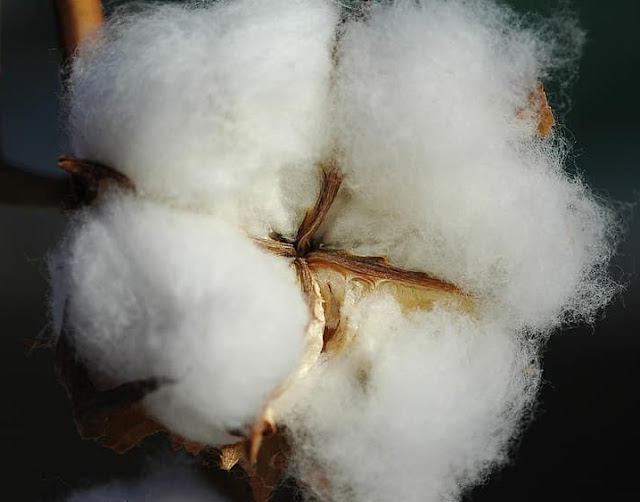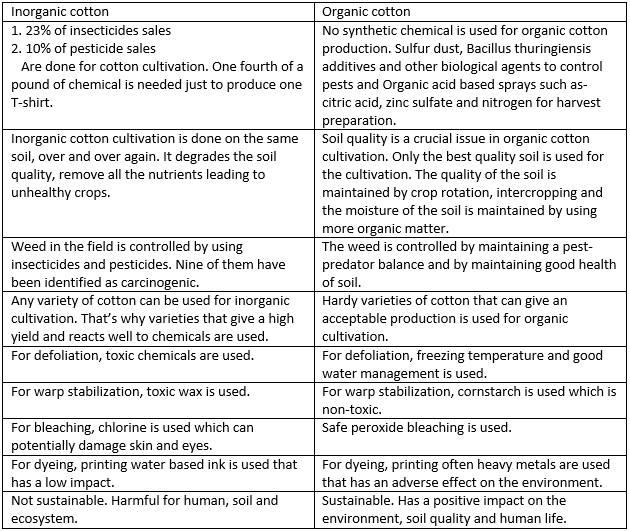What is cotton fiber?
Cotton is a soft, fluffy staple fiber that grows around the seeds and takes the shape of a ball. Cotton is cellulosic fiber. Cotton plant is a shrub or bush type plant with medium to low height. Cotton fiber is very well known all around the world as it controls moisture, provides great comfort, has a good insulation property and durability.
 |
| Cotton boll |
Composition of cotton fiber:
 |
| Composition of cotton fiber |
What is organic cotton?
Organic cotton is a type of cotton that is produced by using
all natural materials and methods. It has very low impact on the environment.
Synthetic chemicals are completely avoided in organic cotton production.
Instead, it used all natural chemicals. Like- sulfur dust, Bacillus
thuringiensis additives and other biological agents to control pests and
Organic acid based sprays such as- citric acid, zinc sulfate and nitrogen for
harvest preparation. Cultivation of organic cotton sustains the health of
ecosystem, soil and people.
Why organic cotton?
 |
| Comparison between organic and inorganic cotton |
Also read: Yarn count (direct and indirect) and yarn notation systems
General points to be considered while cultivating organic cotton:
Organic cotton cultivation has many benefits, in both economic and environmental aspect. But due to many challenges, organic cotton represents only (1-2)% of annual cotton production of the world. But the production of organic cotton is increasing day by day all around the world. Right now, The major
producers of organic cotton are-
|




0 Comments